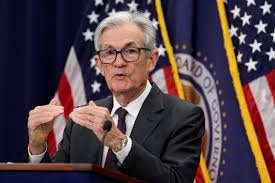The U.S. Federal Reserve on October 29 cut its benchmark lending rate by 25 basis points, bringing the federal funds rate to a range of 3.75%–4%, in line with market expectations.
This marks the second consecutive rate cut and the first since December 2024, as policymakers continue efforts to balance inflation control with signs of a slowing economy.
Markets Expect Another Rate Cut in December
According to futures pricing, markets anticipate another 25-basis-point reduction in the Fed’s next policy meeting, which would bring the key rate down to the 3.5%–3.75% range.
The CME FedWatch Tool showed that 98% of traders expected the October cut, while 85% now anticipate a 50-basis-point total reduction by December, reflecting growing confidence in the Fed’s easing trajectory.
Inflation and Labor Market Remain Key Concerns
Despite inflation cooling, core inflation has held steady at 3% for the past three months — still one percentage point above the Fed’s 2% target. This limits the scope for aggressive monetary easing, even as economic indicators point to softening momentum.
Recent labor market data has shown rising unemployment claims and a slowdown in job creation, strengthening the case for further rate cuts. The last official data, from August, pegged unemployment at 4.3%, with September figures delayed due to the ongoing U.S. government shutdown that began on October 1.
Powell Reaffirms ‘Meeting-by-Meeting’ Policy
Fed Chair Jerome Powell, speaking earlier this month, said the U.S. economy “may be on a somewhat firmer trajectory than expected” but reaffirmed that the central bank would continue a “meeting-by-meeting” approach to future rate adjustments.
He added that policymakers would remain cautious, balancing persistent inflationary pressures with signs of weakness in hiring and consumer demand.
Context and Outlook
The Fed’s decision follows a period of heightened global volatility and domestic fiscal challenges. Analysts say that while inflation is easing, the combination of a government shutdown and cooling labor market could prompt a more accommodative stance in the months ahead.
Meanwhile, the U.S. dollar index has fallen sharply amid expectations of further rate cuts, while gold prices continue to rise as investors seek safe-haven assets.

